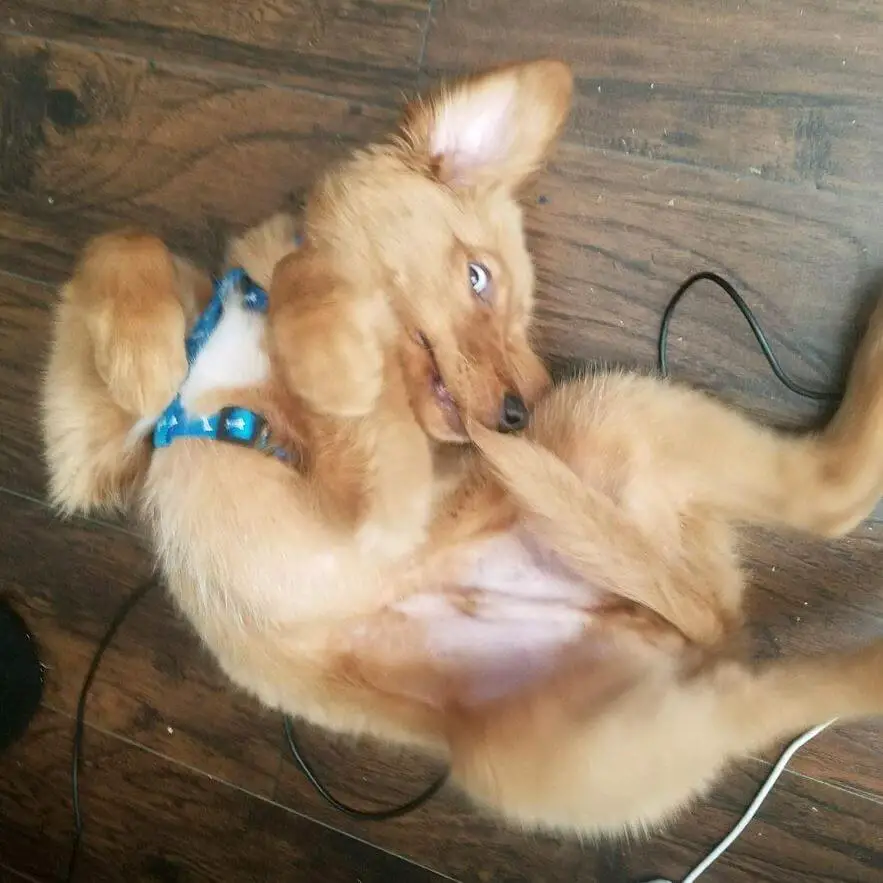You’ve probably seen it before – your dog chasing their own tail in a seemingly endless loop. While it may appear amusing, tail-chasing behavior in dogs can raise questions about its causes and implications. In this article, we’ll delve into the reasons behind why dogs chase their tails and explore whether it’s a harmless habit or something that warrants attention.

Why Do Dogs Chase Their Tail?
- Instinctual Behavior: Tail-chasing behavior can be traced back to a dog’s ancestral instincts. Wolves, the ancestors of domestic dogs, often chased their tails as part of play and exercise. This behavior helped them develop agility and coordination.
- Boredom and Excess Energy: One common reason dogs chase their tails is boredom. If your dog isn’t mentally or physically stimulated, they may resort to tail-chasing as a form of entertainment. This is especially true for high-energy breeds that need plenty of exercise and mental enrichment.
- Attention-Seeking: Dogs are masters at getting your attention, and tail-chasing can be a way to do just that. If your dog notices that this behavior gets a reaction from you, they may continue to chase their tail for attention.
- Anxiety and Stress: In some cases, tail-chasing can be a sign of anxiety or stress in dogs. If your dog is feeling overwhelmed, they may engage in this behavior as a way to cope with their emotions.
- Medical Concerns: While tail-chasing is often harmless, it can occasionally indicate an underlying medical issue. If your dog suddenly starts chasing their tail obsessively, it’s essential to rule out any physical discomfort or pain. Conditions like anal gland problems or skin irritation may prompt this behavior.
- Genetics: Certain breeds are more predisposed to tail-chasing behavior. For example, German Shepherds, Bull Terriers, and Doberman Pinschers are known to have a higher likelihood of engaging in this behavior.
- Compulsive Behavior: In some cases, tail-chasing can escalate into a compulsive behavior. If your dog becomes fixated on their tail and cannot stop, it may be a sign of a compulsive disorder, and professional help should be sought.

How to Address Tail-Chasing:
- Rule Out Medical Issues: If your dog’s tail-chasing behavior is new or excessive, consult with a veterinarian to rule out any medical concerns.
- Provide Mental and Physical Stimulation: Ensure your dog receives ample exercise and mental stimulation through activities, interactive toys, and puzzles.
- Training and Obedience: Basic obedience training can help redirect your dog’s focus and provide mental engagement.
- Avoid Reinforcing the Behavior: Refrain from laughing or giving attention when your dog chases their tail, as this can reinforce the behavior.
- Consult a Professional: If tail-chasing becomes obsessive or compulsive, consider consulting a professional dog behaviorist or trainer.

Tail-chasing behavior in dogs is usually a harmless and normal activity. However, it’s important to monitor your dog’s behavior for any sudden or extreme changes. By providing the right balance of mental stimulation, exercise, and attention, you can help ensure that your dog’s tail-chasing remains a fun and occasional quirk rather than a cause for concern. If you have any doubts about your dog’s behavior, consult with a veterinarian or a professional dog behavior specialist for guidance.
